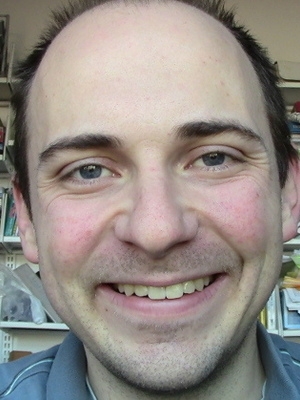You have /5 articles left.
Sign up for a free account or log in.

Jim Fowler
Ohio State University
When Jim Fowler becomes an assistant professor of mathematics at Ohio State University this fall, he can thank his massive open online courses -- and former president E. Gordon Gee.
Fowler came to Ohio State in 2009 as a visiting assistant professor decidedly off the tenure track. When he finished that postdoctoral appointment three years later, Fowler negotiated an administrative position that split his duties equally between lecturing and researching. In fall 2012, Ohio State joined the MOOC platform Coursera, and Fowler began building what would become the university’s first MOOC, Calculus One.
In almost two years, Fowler’s now three MOOCs have run six times, and Ohio State uses his content in flipped and fully online courses for its own students. Local high schools have used the materials to supplement their own math education. Even Fowler’s colleagues in English, engineering and statistics have found uses for his coding.
As an assistant professor (no longer visiting), Fowler’s duties will also be split 50-50, said Luis Casian, chair of the math department. He will spent half his time focusing on math instruction -- creating courses, building tools and writing textbooks -- and the other half researching.
"The department already had a position oriented towards math education, and Jim Fowler fit that position well because of his successful work developing the MOOC," Casian said in an email. "However his work in topology was also taken into account and he is supposed to do both: research in topology and to continue his work on instructional issues."
Fowler's background is in geometric topology, not math education, but he said MOOCs have given him an opportunity to expand his field of work.
“I think a lot of it comes down to the extent to which the education can be viewed externally,” Fowler said about his new position in an interview. “The MOOC stuff kind of lets me publish my teaching, in a way. I certainly think that turned out to be really helpful in being able to evaluate me for this position.... Without the MOOC platform to provide a context for that kind of exploration, I definitely wouldn’t have been able to get involved in the math education world.”
Thomas Evans, senior instructional designer and open courses coordinator at Ohio State, said Fowler's approach to MOOCs represents how Ohio State faculty members should think about digital education.
“When I’m building a course, I don’t want to just build resources for that course,” Evans said. The question the office of distance education and e-learning always asks itself, he said, is “Can we develop this content and use it on iTunes as well as Coursera as well as YouTube? We want to look at ways to reuse that content.”
That line of thought is the same strategy Gee espoused during his second tenure at the university. With the financial crisis threatening public university budgets, Gee became an advocate for “intentional upheaval” within institutions, presenting higher education with a dilemma: “reinvention or extinction.”
Among his proposed reforms, Gee emphasized interdisciplinary work. He recommended a "move from thinking vertically to thinking horizontally,” rewarding faculty members whose work benefited colleagues in other disciplines. Tenure review committees, Gee said, should also give more consideration to candidates’ accomplishments in the classroom -- and perhaps less to the work they published.
Fowler, in other words, is a Gordon Gee hire.
But do MOOCs qualify as teaching, research or service? That “a question OSU always asks,” Fowler said -- and for good reason. MOOCs definitely teach students, though without awarding credit. They also amass potentially useful data on how students engage with the content. As Fowler’s case shows, MOOCs can also benefit other instructors.
In Fowler’s opinion, a MOOC should qualify as research. “You’re building new tools, you’re looking at literature ..., we deal with the IRB,” he said. “It definitely smells like research from that point of view.”
Fowler said he would never experiment with an untested assessment tool in a face-to-face course. In a MOOC, "it’s a little bit lower-stakes."
He added, “If it were teaching, it would have to be assigned to a course number, and it isn’t. And if it’s service, it’s definitely too much service.”
Fowler’s career path doesn’t necessarily herald the beginning of MOOCs as a foolproof plan to secure a tenure-track position, however. He acknowledged that the math department has been “insanely supportive,” and said some of his colleagues in the humanities are struggling to convince senior faculty members in their disciplines.
“It’s pretty clear what a calculus course would look like,” Fowler said. “There are definitely advantages to being in math and doing this kind of thing.”
To encourage interdisciplinary work, Fowler founded the STEAM Factory, a collaborative community at Ohio State.
"Sometimes 'STEAM' is thought to mean STEM + A, but the STEAM Factory is all about reappropriating this limited -- and mistaken -- vision," Fowler said. "Just as steam-powered railroads made the world smaller, so too do does STEAM connect the university into 'one university.' Gordon Gee often spoke about 'one university' and about that one university as a leadership model for the wider world."

